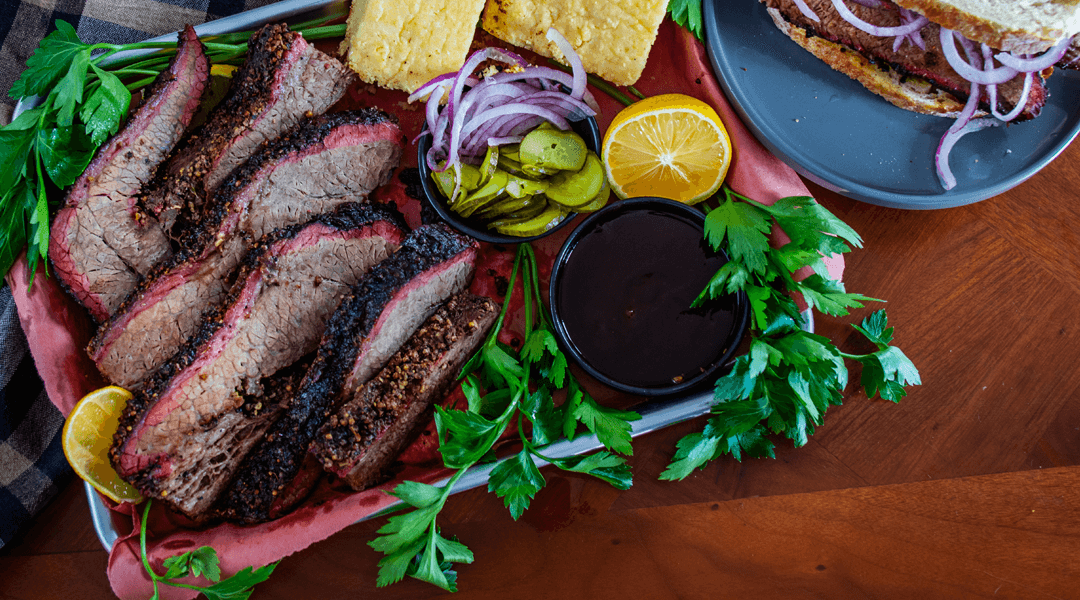Have you ever wondered what the secret to perfectly smoked brisket was? What about more than that? Read on to discover the (not so) secret techniques to beautiful brisket, pulled pork perfection, and even riot-worthy ribs. These are the top tips for smoking, slow cooking, and ensuring your next big cook goes off without a hitch.
It’s All in the Prep
Start by selecting the right cuts of meat. High-fat cuts tend to get tough when you use hot and high-cooking methods, ones that you would typically braise or slow cook in some way. These are the cuts you want to use when smoking low and slow. Brisket, Chuck, Pork Shoulder (also known as Boston Butt), and Ribs are ideal for these methods of cooking and react well when properly smoked.
Seasoning your meats before smoking or slow cooking. While it’s not ideal for times when a wet cooking method, like braising, will be used, seasoning the meat up to 24 hours before cooking can deeply flavour things and provide the ideal environment to foster beautiful bark.
Opt for going simple, salt, pepper, and garlic, on brisket, unless you are aiming for a specific flavour profile or regional influence. Pork is fattier and can handle a little more in the seasoning department, so add some sugar and paprika to the mix – there are some pretty fantastic rubs available commercially, and if you find one that you love, you can’t go wrong.
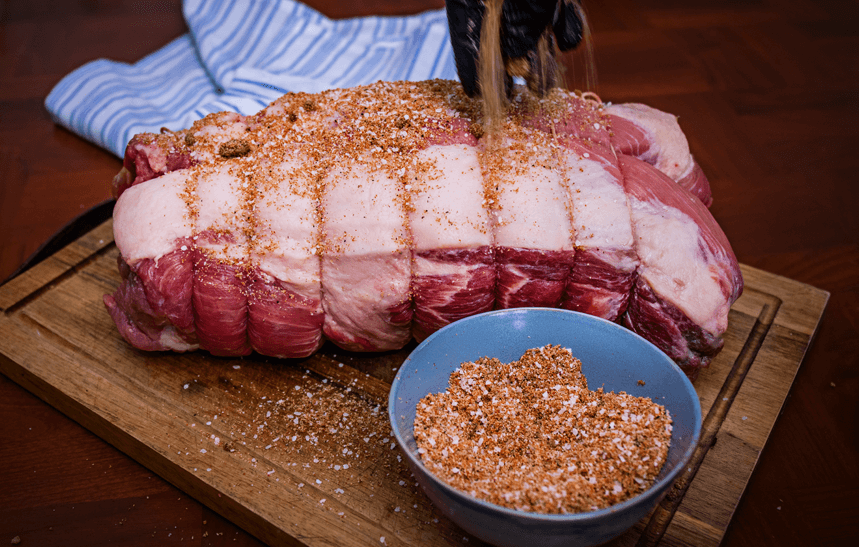
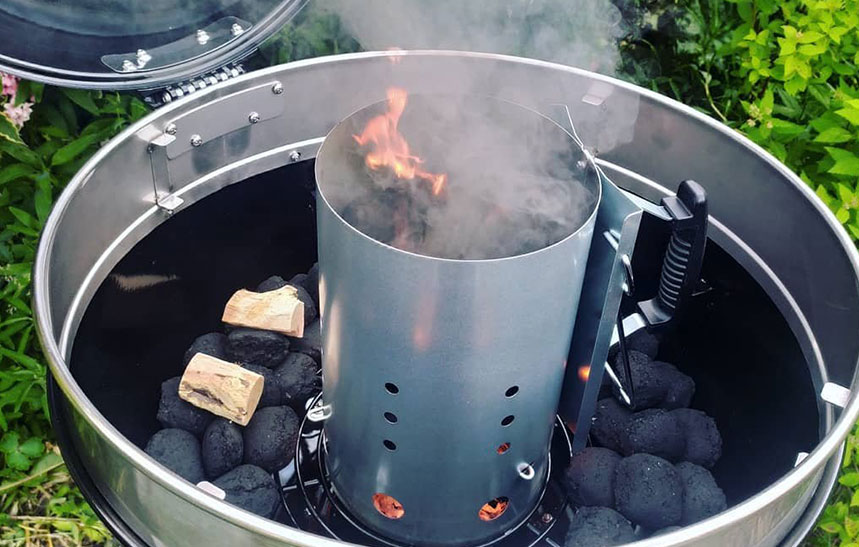
Light Your Fire
When you start any cook, you need to wait for your fire to be lit and stable before starting your cook. This is easily managed when you are using a charcoal chimney. The fire will ignite hot and fast, however, the smoke created is going to be dirty and acrid. This is because there is residue and soot on the charcoal that needs to be burnt off before you can start cooking.
But you’re using a low and slow method that involves using unlit charcoal to keep a steady temperature. How does this not directly affect the smoke quality? Simple. Once you have lit a quarter to half load of charcoal, the rest you are igniting is going to start in a very slow manner, only one to two bricks or chunks of charcoal at a time. This creates very little of the “bad” smoke and shouldn’t impact the final results as the coals slowly ignite over time.
Consistent Temperature
The secret to any successful smoke is the consistent temperature within the smoker or charcoal BBQ. There is a sweet spot between 225°F (107°C) and 275°F (135°C) that prevents any sugars present in the rub, mop, or spritz from caramelizing too much or burning. Watching both the temperature of the BBQ itself and the internal temperature of the meat being cooked is integral to knowing how the cook is going and when you need to do next steps or remove the food to wrap or rest for the perfect final product.
The Right Smoke
When you smoke anything, you are looking for the right kind of smoke. Thin, wispy, and blue/white are the ideal characteristics of smoke. Not billowing clouds of greyish-white. Thin and wispy smoke is sweet and delicate, producing a light and fragrant smoke flavour on food. While thick smoke tends to be bitter.
Using the right woods to produce the right smoke for the right meat is also important. Light and fruit woods like apple and apricot produce a lighter and more floral smoke – perfect for lighter meats like poultry and pork. While hickory and mesquite are ideal for red meats and pork with their stronger flavour. Combine lighter woods with the heavy flavoured woods for a middle ground in flavour profile. Or you can go with medium woods like oak and pecan for a light smoky flavour without being too floral, fruity, or overpowering.
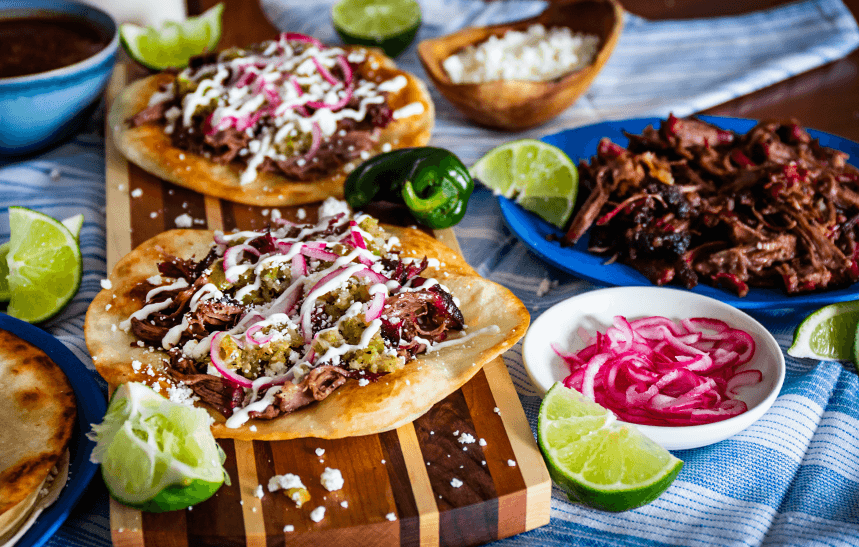
Smoked Short Rib Tostadas
Try this recipe for smoked short rib and enjoy the joys of low and slow smoking.
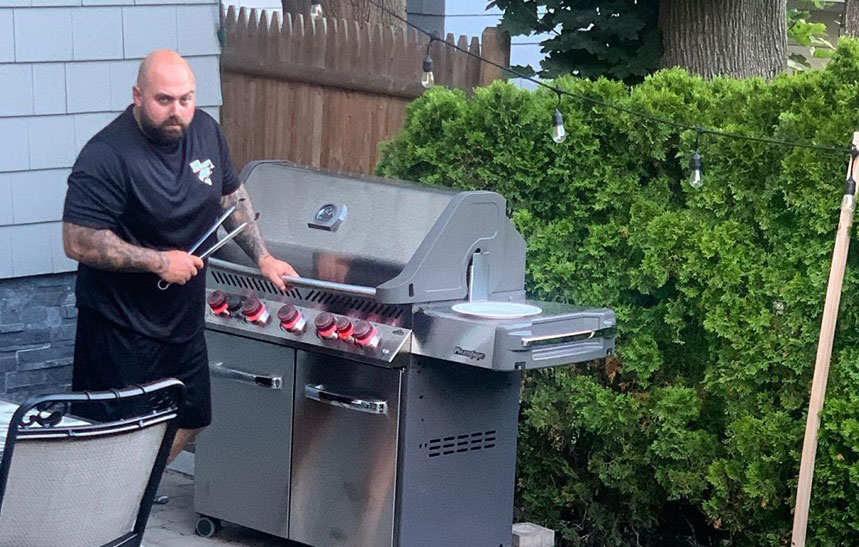
Take Your Time & Plan Accordingly
Smoking meat is a true labor of love, requiring patience and a careful eye on the process. It’s not uncommon for a cook to take upwards of 16 hours, plus the essential resting time afterward, to achieve that perfectly tender, flavourful result. Throughout the cook, you might encounter one or more “stalls,” where the meat seems to stop cooking, but don’t rush it—this is all part of the process. Weather can also play a role in how the cook progresses, with heat speeding things up, colder temperatures slowing it down, and humidity affecting everything. Embrace the time it takes, and you’ll be rewarded with rich, smoky perfection.
It’s Okay to Wrap Your Meat
Some believe that wrapping meat during a smoke is not ok. I’m here to tell you that it is. Why should you wrap? When should you wrap? And what kind of wrap?
When to Wrap Your Meat
When meats reach temperatures between 150°F (66°C) and 180°F (82°C) the moisture within the meat being smoked is released and cools the outside, preventing it from warming – this is known as the stall. It is evaporative cooling and can be mitigated by wrapping your meal at these temperatures. Wrapping will keep moisture against the meat and effectively braise it in its own juices. There are a few different types of wrapping that you can use.
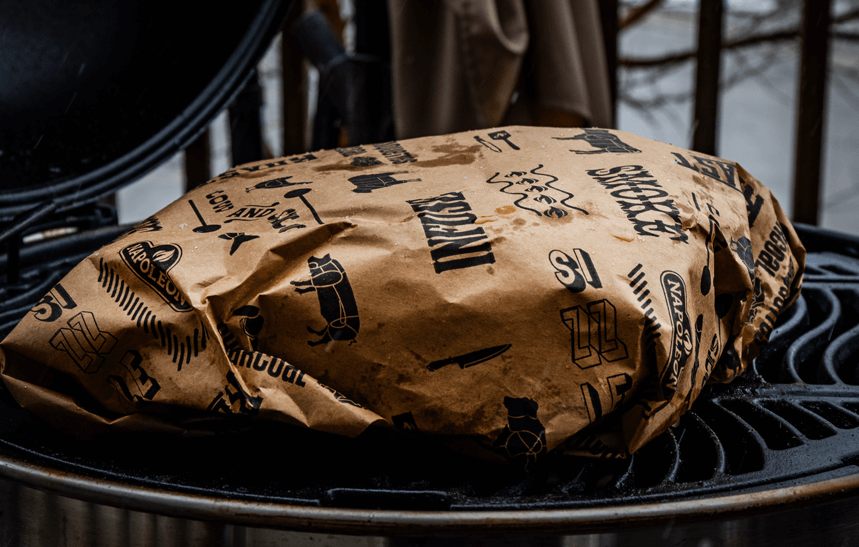
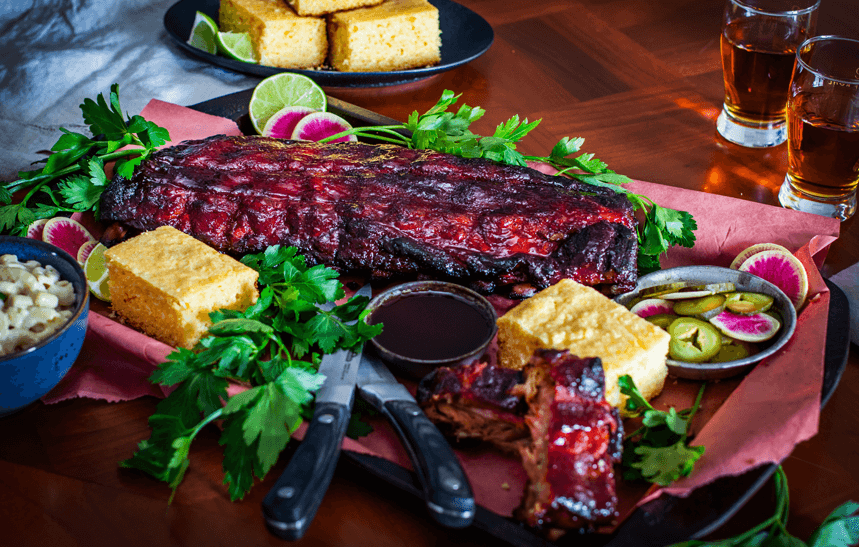
3-2-1 Style Smoked Ribs
Foil wrapping is perfect for these 3-2-1 style smoked ribs. This recipe is super easy and the results are undeniable.
Paper / Butcher Paper
Using a paper wrap allows a little airflow and moisture to evaporate or absorb into the paper while continuing to cook. This provides improved bark texture, however, there is less moisture to draw back into the meat while resting. Ideally, you want to wrap things as tight as possible to prevent steaming within the paper wrap.
Foil
Using a foil wrap traps heat and moisture against the meat, but this sacrifices bark in the process by keeping it wet. This provides the most juice for the end product to reabsorb while resting for the juiciest results.
Foil Boat Method
The foil boat method is a balance between a full foil wrap and leaving the meat unwrapped. Foil covers the bottom and is pulled up the sides of the meat, rolled so that it creates a snug-fitting foil tray beneath the meal. This catches any liquids that come out of the meat while the top, and fat cap, are allowed to get and remain crisp. This method is seen as the best of both worlds and allows more moisture to be drawn back into the meat during the resting period.
Cook Your Meat Past Done
While this sounds counterintuitive, cooking these cuts past the point of USDA “doneness”- your typical 165°F (74°C) – is rendering. The idea behind cooking these cuts past done is to create rendering. You want to cook your meat, specifically brisket, pork shoulder, and ribs – both beef and pork – to around 205°F (96°C). This is when collagen is physically broken down allowing the food to be easily broken apart. It provides increased tenderness because the broken-down collagen and melted fat absorb the water in the meat and hold on to it. This lubricates the mouth when eating for a succulent, juicy, and pleasant feeling. Combine that with intense and delicious flavours for a sucker punch to your tongue that is a total K.O.
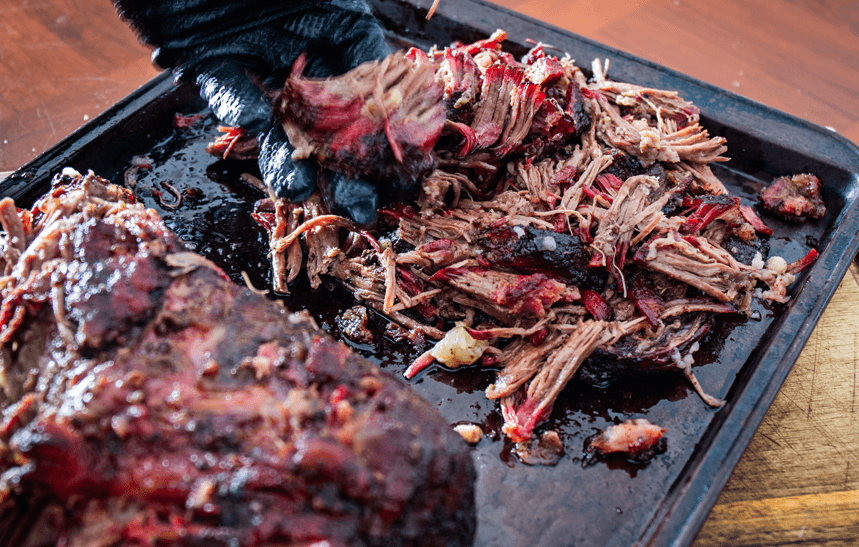
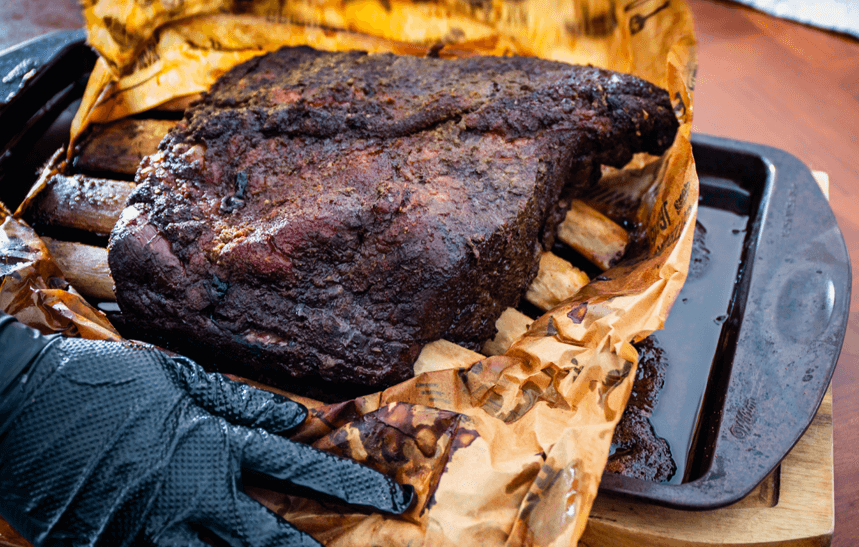
Rest the Meat
Rest your meat before slicing and serving. This is integral to the best results. It allows the moisture that was squeezed out during the cooking process to reabsorb and redistribute. Then, when sliced, all of the good and flavourful juices won’t run out. Resting allows the meat fibers to relax and any liquid to be reabsorbed and redistributed for better bites. The gelatin created by the slow cooking acts as a sponge and soaks up the water that is actively being pushed away by the still-contracting muscle fibers. As meat rests these fibers relax and provide more space for the gelatin to soak up the juices.
Depending on the meat that you are resting it will require about 5 minutes per inch (2.5 cm) of thickness for things like ribs or a thick steak, and even chicken. Anything bigger, roasts, brisket, shoulder, and even super-thick beef ribs will need more, about 10 minutes per pound – or 10 minutes per 0.5kg.
Finishing Touches
Once rested, there may be things that need to be done to make your meal memorable. Does it need saucing, or shredding? Pulled pork needs to be pulled and can be doused with your favourite sauces to be put on a fantastic sandwich. Do you need to slice off some, in the case of brisket, and continue to cook the point in sauce for burnt ends? Ribs require finishing before resting. Sauce them up at the end of the cook and then finish them over high heat to caramelize and set the sauce. Then rest, slice, and serve to the messy delight of your friends and family.


Gochujang Smoked Pulled Pork
The spicy and vinegary finishing sauce on this pulled pork will tickle your tastebuds. Try this Gochujang Pulled Pork recipe the next time you’re craving pulled pork.
People Also Asked:
What is the Secret to Juicy Pork Ribs?
Cooking low and slow, preferably with smoke is the secret to juicy pork ribs. Preheat your charcoal BBQ to 225°F (107°C) and use your favourite smoking wood. Smoke for up to 3 hours. Wrap the ribs in foil, meat side down, and add some apple juice. Continue cooking at the same temperature for an additional 2 hours. Finally, unwrap the ribs and cook at low temps for another hour or so. Sauce them with your favourite and sear them over high heat to caramelize the sauce. Rest for 5 to 10 minutes before slicing and serving.
What is the Trick to Smoking Tender Brisket?
The secret to smoking tender brisket is to pre-salt the night before. Then, cook at 225°F (107°C), keeping the fat side up to allow the juices to naturally baste the meat as it smokes. Start smoking with the brisket uncovered, to establish the bark. Once the brisket reaches an internal temperature of around 170°F (77°C), wrap the brisket in foil to lock in moisture, ensuring the meat becomes even more tender. Finally, rest the brisket, wrapped in a towel, inside a cooler without ice for at least 3 hours before slicing and serving.
At What Temperature Does Collagen Break Down in Pork?
The collagen in pork begins to break down at temperatures of 160°F (71°C). This, combined with the gelatinized fat, make the most succulent meats you have ever tasted.
What is the Secret to Pulled Pork?
The secret to the best pulled pork is to pre-salt and season a pork shoulder, allowing it to dry-brine overnight. Smoke using indirect heat at a temperature of between 225°F (107°C) and 275°F (135°C). Baste or spray with apple juice, cider vinegar, or other flavourful liquid every 30 minutes or so. Cook until the pork reaches an internal temperature of 170°F (77°C), then wrap it in foil or unwaxed butcher paper to finish. If you used foil, add apple juice to the bottom of the foil. Continue cooking until an internal temperature of 205°F (96°C), then rest for at least an hour before shredding and saucing.
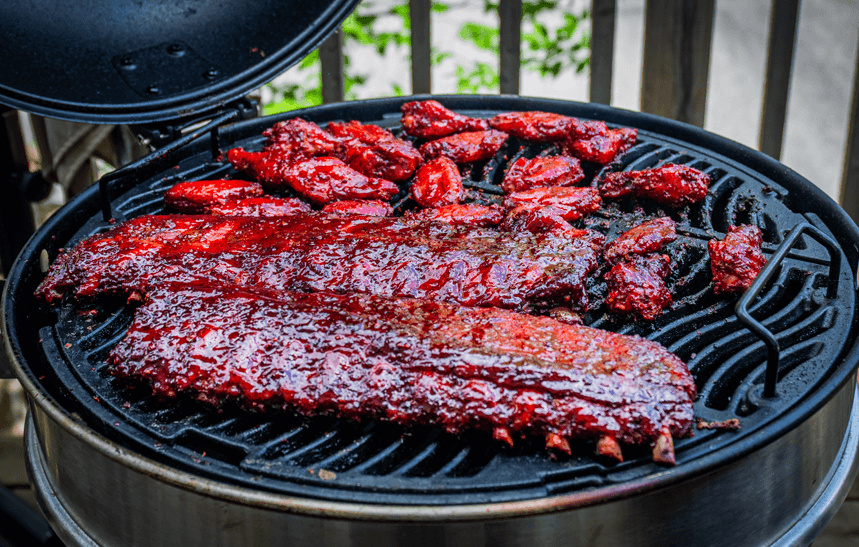
Time to Fire Up the Smoker!
Now that you have mastered the secret to perfectly smoked brisket, pulled pork perfection, and riot-worthy ribs, will you be firing up the smoker more frequently? By following these essential tips, you’ll create brisket, ribs, and pulled pork that is juicy, tender, and packed with flavour. Remember, it’s all about prep, maintaining a steady temperature, and letting the meat rest properly. Fire up your smoker and enjoy the satisfaction of serving perfectly cooked BBQ to your friends and family! Share your smoky success stories, recipes, and photos with us on social like our Facebook and Tiktok pages using the hashtags #NapoleonEats and #NapoleonGrills.
To read the details please check out the Bosch blog post here!

